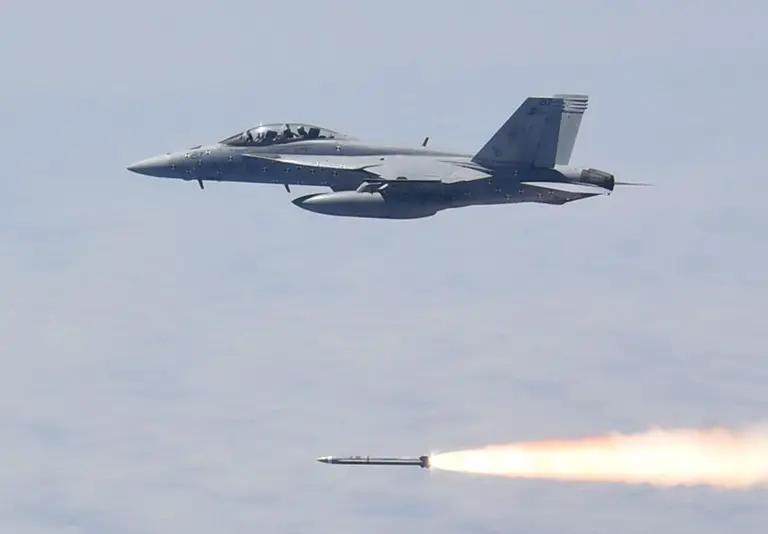In a significant development for military cooperation between the United States and Australia, the U.S. State Department has approved a potential Foreign Military Sale (FMS) to the Government of Australia. This deal includes AGM-88G Advanced Anti-Radiation Guided Missiles-Extended Range (AARGM-ER) and associated equipment, with an estimated total value of $405 million. The Defense Security Cooperation Agency (DSCA) has formally notified Congress of the proposed sale. The Government of Australia has requested up to 100 Advanced Anti-Radiation Guided Missiles-Extended Range (AARGM-ER), equipped with a Global Positioning System (GPS) precise positioning system (PPS) utilizing the Selective Availability Anti-Spoofing Module (SAASM) or M-Code. Additionally, the request includes 24 AGM-88G AARGM-ER guidance sections (spares) and 24 AGM-88G AARGM-ER control sections (spares). The deal also encompasses non-major defense equipment (non-MDE) items such as missile containers, component parts, support equipment, repair capabilities, software, classified and unclassified publications, training, and logistics support.
The sale aligns with the foreign policy and national security objectives of the United States, reflecting the country’s commitment to supporting key allies in the Western Pacific. Australia’s strategic location and role as a political and economic power make it a critical partner in ensuring regional stability and security. By strengthening Australia’s self-defense capabilities, this sale contributes to maintaining a balance of power and promoting peace in the Western Pacific. The AARGM-ER will significantly enhance Australia’s ability to counter evolving threats. The missile is designed to suppress and destroy enemy radar systems, thus improving the survivability of Australia’s tactical aircraft during combat operations. The acquisition of this capability is expected to enable Australia to engage land and sea-based radar emitters associated with enemy air defenses more effectively. Australia’s armed forces are well-positioned to integrate the AARGM-ER system into their operational framework, ensuring seamless absorption of the new equipment. The proposed sale will not alter the existing military balance in the region but rather reinforce Australia’s ability to respond to regional threats and maintain security.
The AGM-88G Advanced Anti-Radiation Guided Missiles-Extended Range (AARGM-ER) is a state-of-the-art, tactical air-to-surface missile, specifically designed to neutralize surface-to-air radar systems. The missile’s advanced guidance system homes in on enemy radar emissions, using a fixed antenna and seeker head in its nose to locate and destroy targets. With its smokeless, solid-propellant, booster-sustainer rocket motor, the AARGM-ER can reach speeds exceeding Mach 2, making it highly effective in contested airspace. The missile features three operational modes—Pre-Briefed (PB), Target of Opportunity (TOO), and Self-Protect (SP)—allowing it to adapt to various mission requirements. Its redesigned airframe, enhanced propulsion system, and streamlined control surfaces give it a longer range and greater speed than its predecessors. The AARGM-ER can be integrated with a range of aircraft, including the F-35A and F-35C Lightning II, P-8 Poseidon, F-16 Fighting Falcon, and Eurofighter Typhoon, though it cannot be internally carried on the F-35B due to space limitations.
Northrop Grumman Systems, based in Falls Church, Virginia, will serve as the principal contractor for this sale. The company’s expertise in advanced missile systems, including the AARGM-ER, positions it as a key partner in delivering enhanced capabilities to both the U.S. military and its allies. The AARGM-ER builds on existing AARGM components, adding a new air vehicle, advanced propulsion, and a high-performance warhead, making it one of the most advanced counter-air-defense systems available. This $405 million sale of AARGM-ER missiles to Australia underscores the close defense ties between the United States and Australia. It not only strengthens Australia’s air combat capabilities but also supports broader U.S. objectives in maintaining stability in the Indo-Pacific region. As global security dynamics continue to evolve, such strategic partnerships remain crucial in ensuring the readiness and effectiveness of allied forces.















